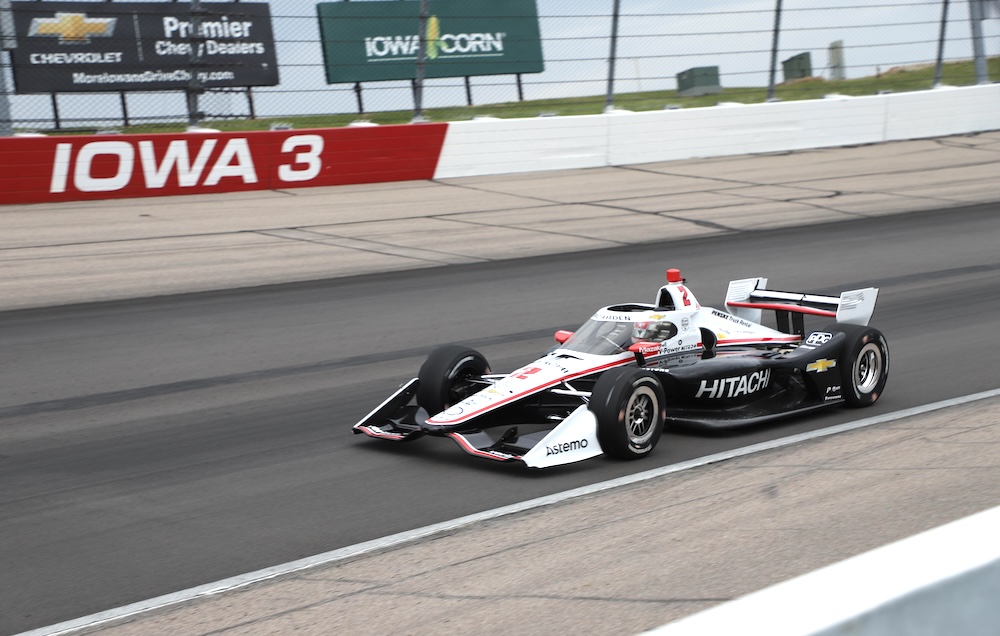The combination of higher cornering speeds due to the recent repaving of Iowa Speedway and the recent addition of 105 lbs of weight with the NTT IndyCar Series’ new energy recovery systems has led the series to dial back downforce for this weekend’s Hy-Vee doubleheader on the 0.875-mile oval.
“We’re limiting the rear wing level to hole three of six with a wicker,” Tino Belli, IndyCar’s director of aerodynamic development, told RACER. “Which is 10 percent less downforce, about 450 lbs less. We typically adjust downforce in 10-percent increments. The (3/8th-inch tall) wicker has always been optional, so it’s still optional if they want to go lower on downforce.”
The series tested a number of downforce options during last week’s test at Iowa, and also actively monitored the electronic load sensors contained in the suspension pushrods on the Dallara DW12s to gauge forces at play in the fastest corners. Based on the data, taking 450 lbs of loading off the cars was chosen as the right call to make.
[lawrence-auto-related count=3 category=1408]
“At the test, we did warn the teams that we might come back with this wing setting, so we suggested that they try it and make sure they know what to do with this wing setting,” Belli added. “We’ve got to make sure we don’t overload things on the car, so we’re just trying to keep the loads down to a nice, safe level.”
Although drivers will have an exceptional amount of downforce at the disposal, thanks to IndyCar’s use of its road course front wings and most of its road course rear wing package, the 10-percent cut in maximum downforce could lead to more lifting in the corners, which would extend tire life.
Iowa also marks the first hybrid oval race for IndyCar. Heading into the Iowa event, the series published a per-lap limit of 105 kilojoules of hybrid energy expenditure, which teams also used in testing. Based on their reports, the 105kJ limit resulted in approximately three seconds of the 60 added horsepower during laps that fell in the 17-second range.
